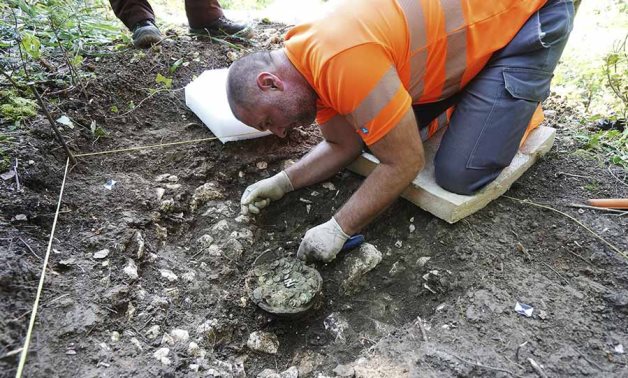
This rare discovery was made by Swiss amateur archaeologist volunteer Daniel Ludin - ancient - origins
CAIRO – 21 April 2022: Nearly 1,300 priceless Roman coins from the fourth century were found in a bowl in the province of Basel, Switzerland by amateur archaeologist volunteer Daniel Ludin, using metal detectors, in addition to unearthing ancient pieces of pottery.
The large broken vase filled with copper coins contained the ultimate prize for the Swiss archaeologist; The entire hoard of Roman coins dating back to the reign of Emperor Constantine (306-337 AD). The smallest coins in the treasure date back to 332-335 AD. This is according to ancient-origins website.
.jpg)
Coin hoards from the era of economic stability are unusual. This is what makes this treasure rare and unusual. Relatively speaking, Constantine's rule was marked by general peace and quiet, therefore, treasures of coins from this Roman period are rare.
.jpg)
On the contrary, in times of economic instability, people would bury coins in the hope of using them in better times and to protect them. Instability may include civil wars, incursions of neighboring ethnic groups, and economic crises.
.jpg)
Part of the many reforms Constantine enacted include the separation of civil and military powers, and the introduction of solid gold coins. Gold coins intended to combat crippling inflation in the 3rd century AD and replaced the pure silver coins in 305.
Solid gold coins became the standard for Byzantine and European coinage for more than 1,000 years.
Constantine also transferred the capital of the Roman Empire to Byzantium, and renamed it Constantinople (modern Istanbul).
Comments
Leave a Comment